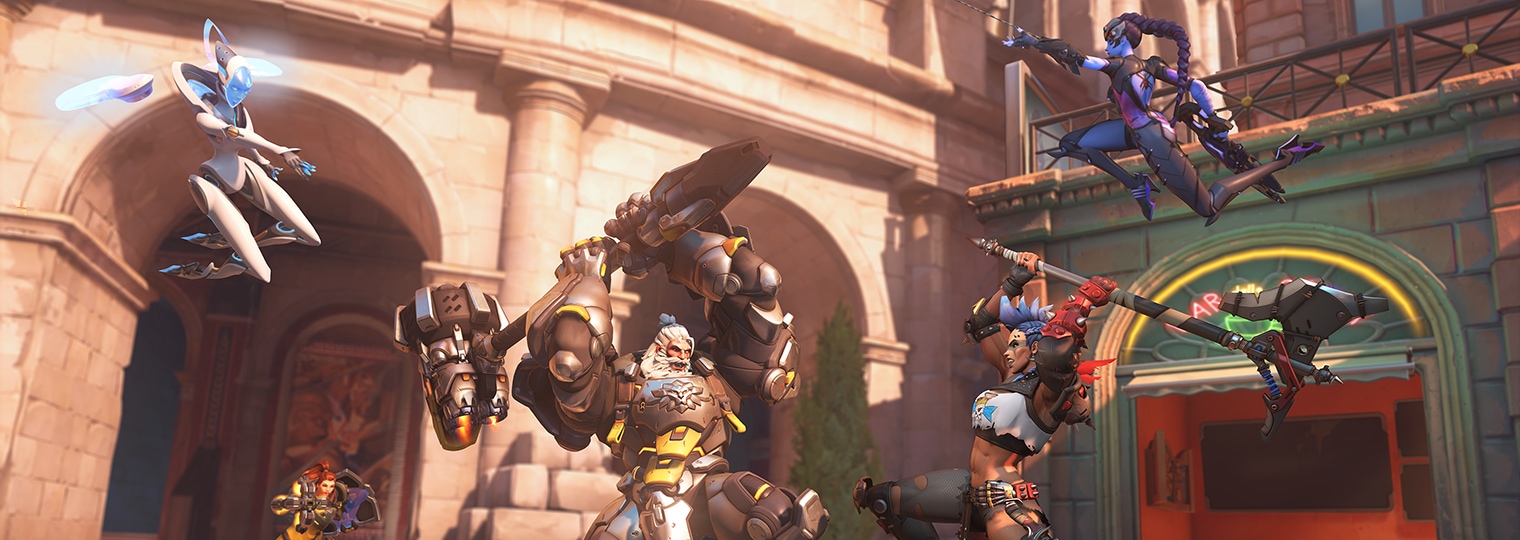
The newest season of Overwatch 2 is just around the corner, and with it comes some exciting changes. During our Overwatch 2: What’s Next Panel at BlizzCon 2023, we shared a sneak peek at some of the philosophy guiding many of the system changes coming this year: striving to make PvP gameplay more rewarding and fun and providing greater transparency for players in-game. We are introducing major changes to Competitive in the new season—from a new progression system to an all-new skill tier above Grand Master—as well as major gameplay changes to combat and hero survivability. Read for details on what you can expect for Overwatch 2 Season 9: Champions.
Updating the Competitive Experience
We’ve heard your feedback on Competitive Play over the last eight seasons, and we have some big updates coming that will give you the opportunity to build on your skills and see how you progress through the Competitive ranks. We built a better system that’s more accurate while also helping convey the meaning behind the mathematical complexity of a modern matchmaker and bring clear insights about what impacts your rank in every match.
Seeing How and Why Your Rank Changes
One piece of feedback we heard is that just knowing your rank doesn’t say anything about why your rank went up or down. Competitive Updates originally worked to provide updates that reflected your growth as a player across multiple matches, but with the goal to provide greater transparency in each individual match, we’re going back to updating your rank after every match and showing how much progress you gain or lose between each Skill Division. We’re also displaying Modifiers that affected your last match below the rank progression bar. Some modifiers help provide transparency in the matchmaking for each match, like getting a boost when you defeat a team that was more favored to win. While other modifiers show if your rank is calibrating, like going on a huge win streak, proving you belong in a higher rank. Feedback is a driving force behind these changes, and we want to hear your thoughts on Competitive Play now that you’ll have more context for each game.
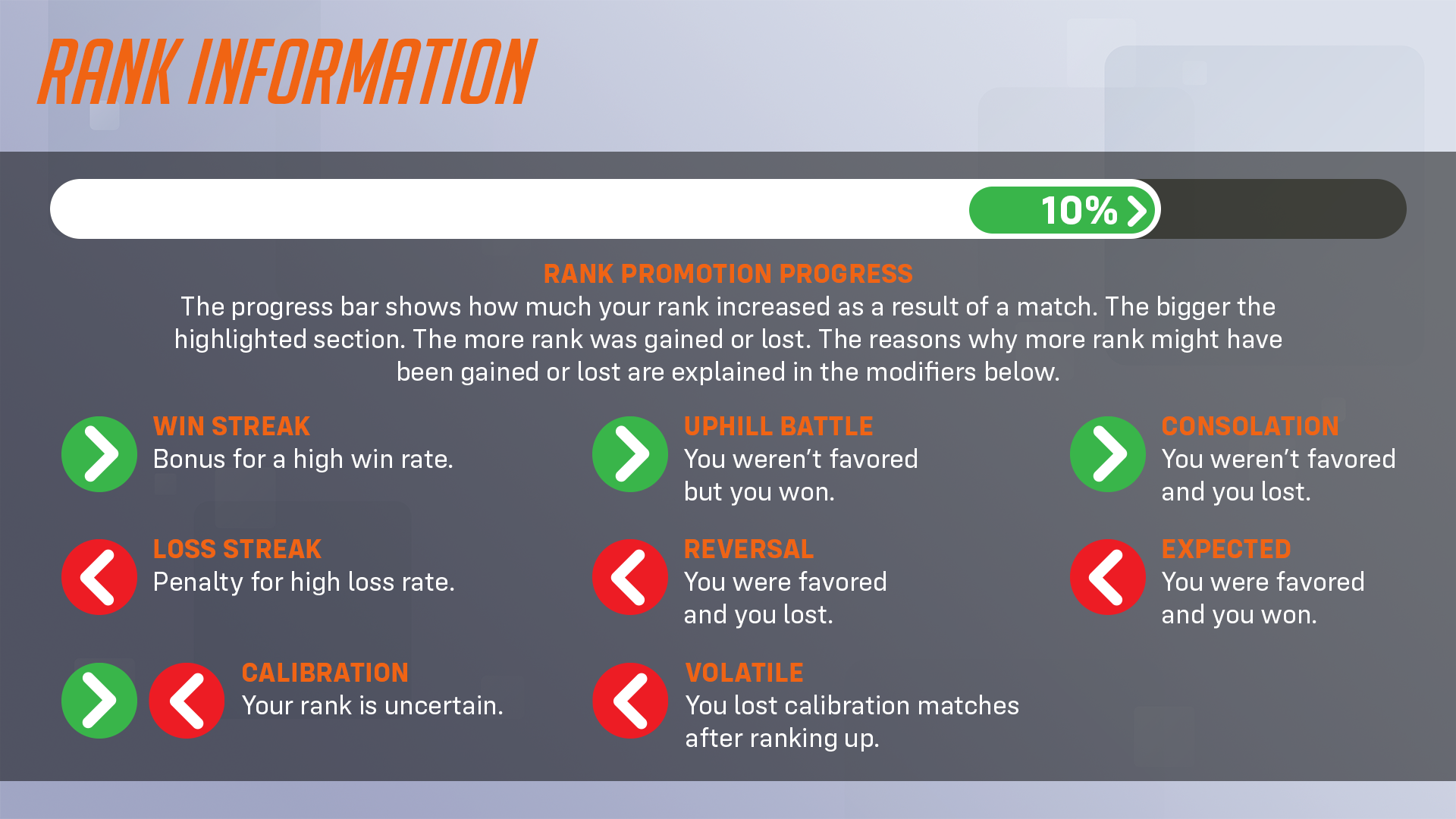
Bring a Fresh Start with Placement Matches and Rank Resets
With both the changes to Competitive Play and the broader changes to gameplay starting this season, we feel this is a perfect opportunity for everyone to start fresh as they compete on the ranked leaderboards. To accomplish this, we’re reintroducing Placement Matches and resetting everyone’s competitive Skill Rank.
Your journey to the top begins with 10 all-new Placement Matches. With everyone’s ranks being reset, these 10 Placement Matches provides you with a high-stakes opportunity to make big gains in determining your new starting rank. As you progress through placement matches, there will be a predicted starting rank after each match. You’ll only have one chance this year to run your Placement Matches, so pick your best heroes and stay hydrated because these games count for a lot.
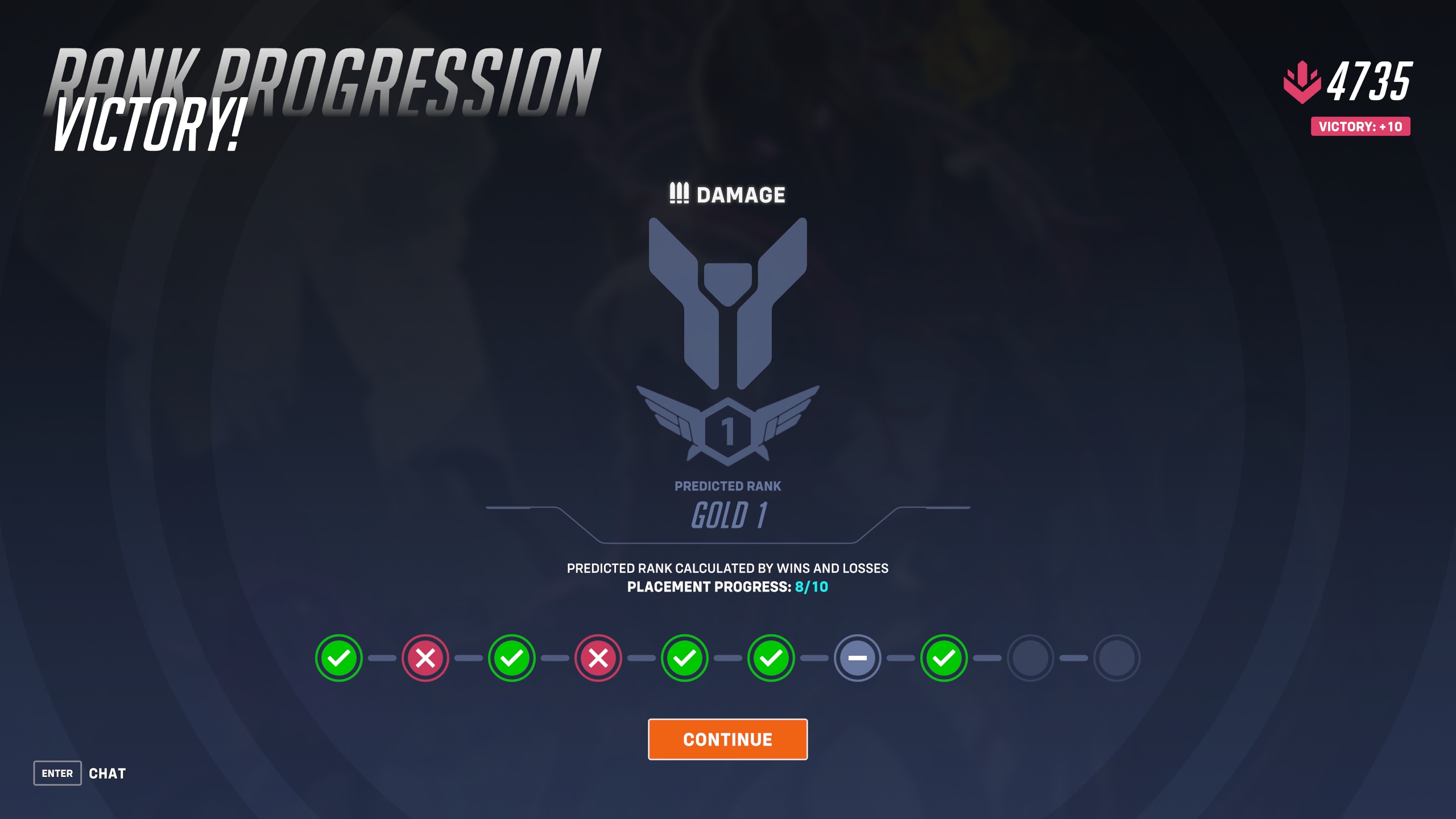
Rise up to the Rank of Champion
So how high can you go? We’re introducing the ultimate rank, Champion. This is the most prestigious tier above Grandmaster, intended to show who is the best among the most skilled players in the game. Even with the boosts that Placement Matches can provide, top-ranking players will still need to win a lot of games to reach Champion 1 and prove they are the best of the best. This is the most exclusive rank in the history of Overwatch, and we’re on the edge of our seats to see who will achieve such heights in Season 9 and beyond.
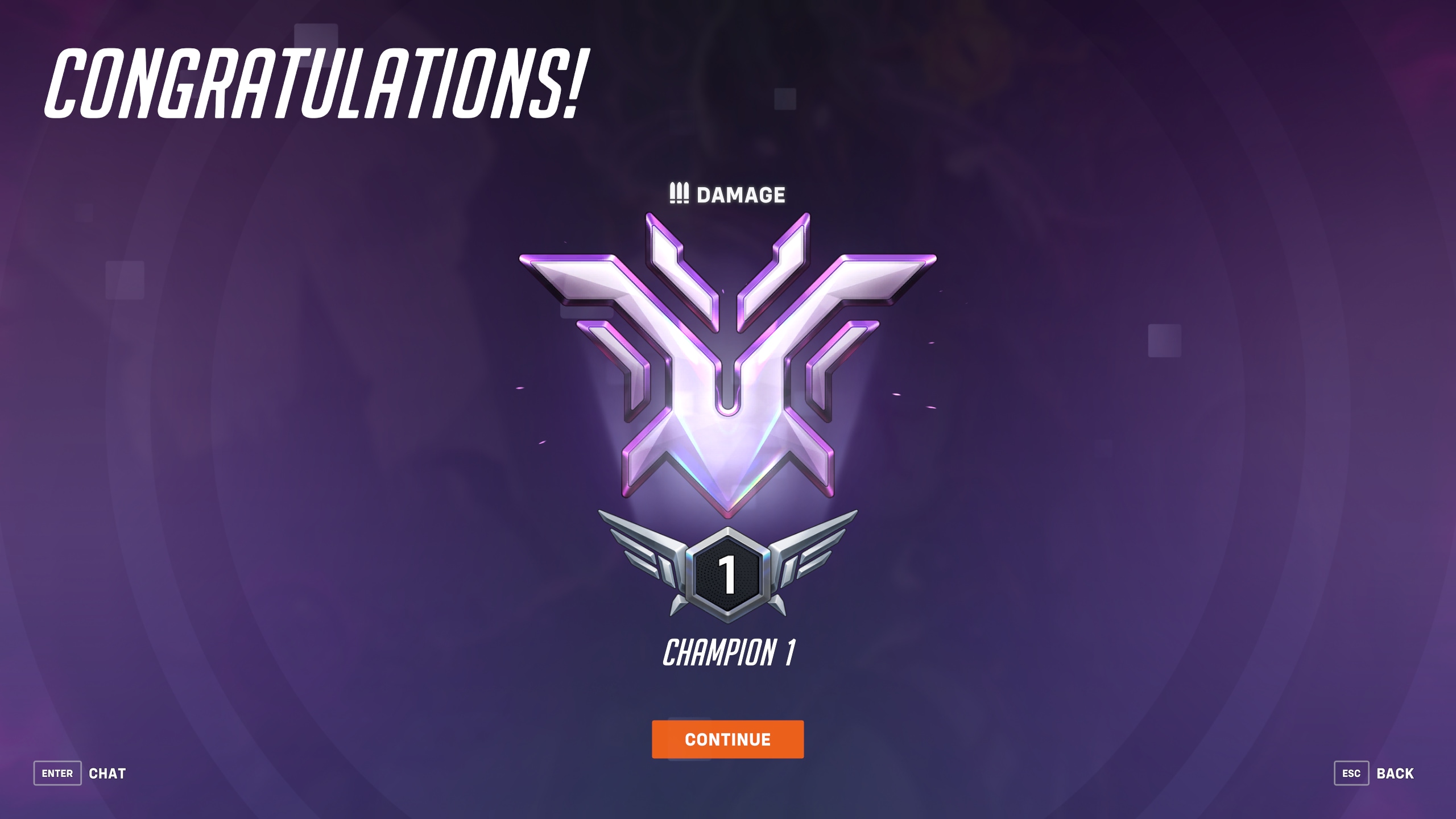
New Competitive Rewards and Jade Weapons
Season 9 introduces Jade Weapon Variants, unlockable with new 2024 Competitive Points. Earning Jade Weapon Variants will reflect your dedication to Competitive Play in 2024, not your highest rank achieved. Luckily, these new Jade Weapon Variants will not be as exclusive as the Champion rank—you will progress towards earning competitive points just by playing the game mode, with more progress granted towards wins. Competitive points earned for winning and drawing a match have been rebalanced around this new progression system, which should make every match feel rewarding regardless of the outcome.
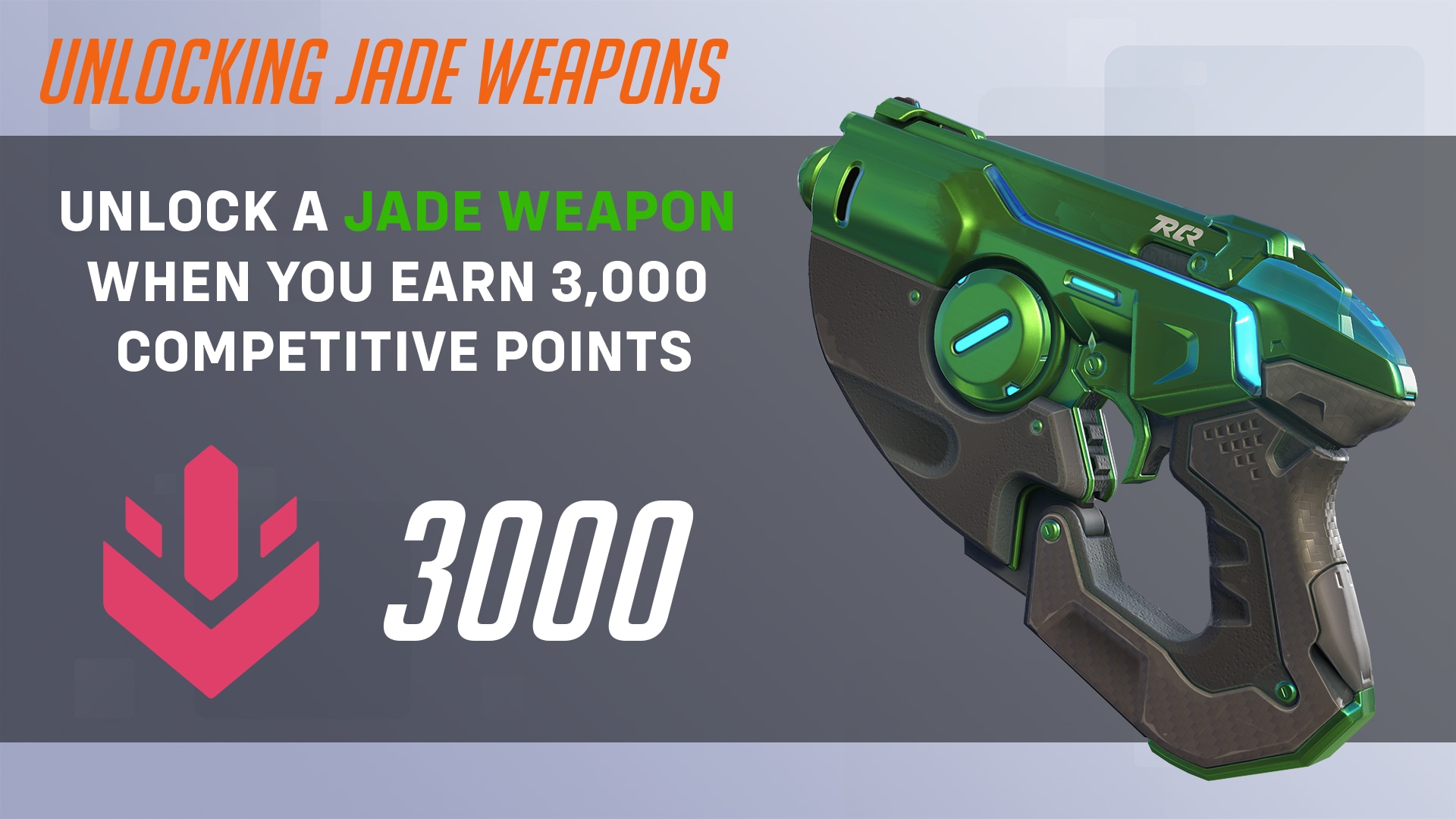
Legacy Competitive Points and Golden Weapons
Through the end of Season 8, players can still earn Competitive Points toward unlocking Golden Weapon Variants. When Season 9 starts, your previously earned Competitive Points will be converted to Legacy Competitive Points.
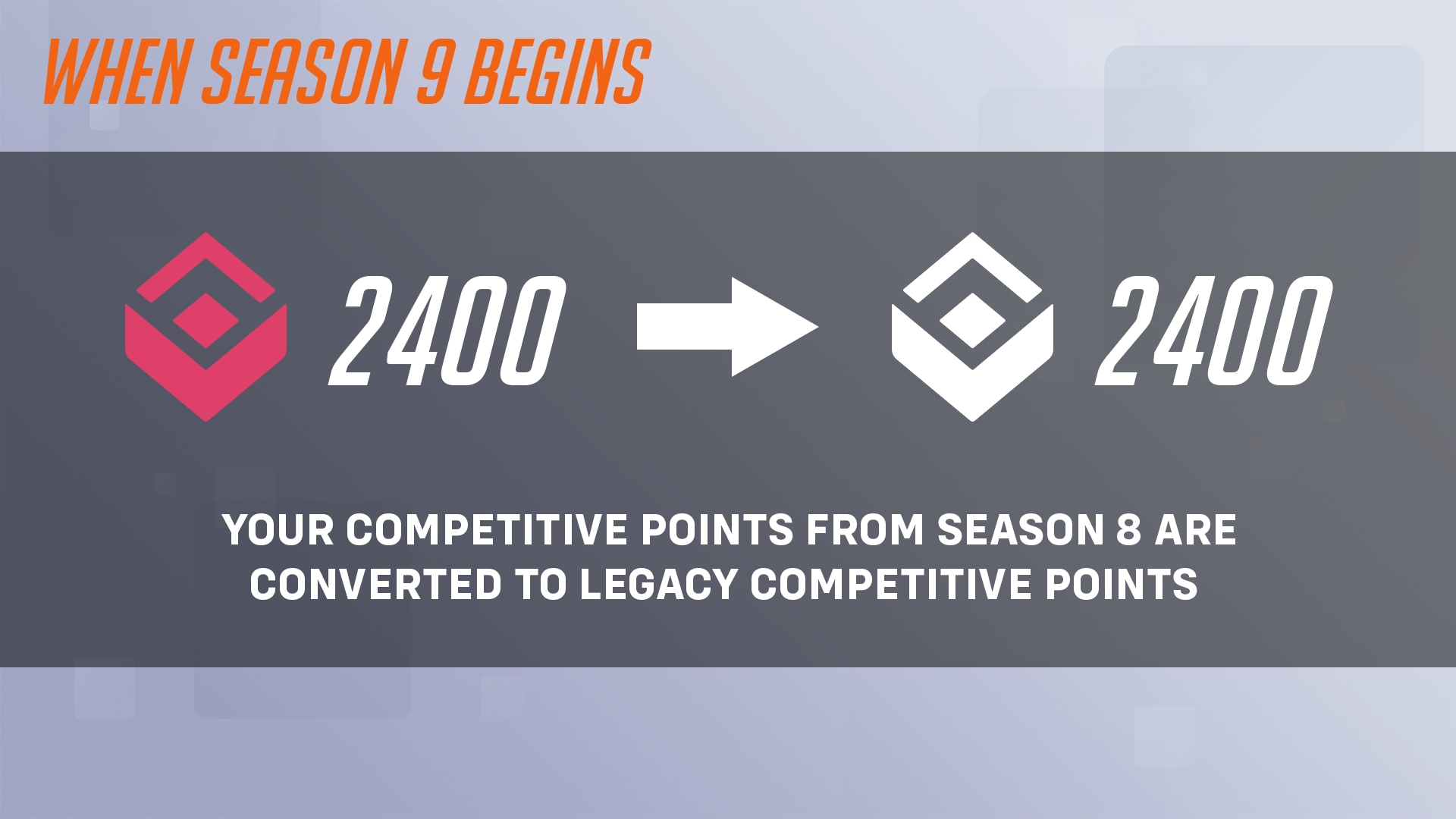
You’ll still be able to use Legacy Competitive Points to unlock the Golden Weapon Variants, but the way you receive Legacy Competitive Points will change. Once the 2024 Competitive Year closes, any leftover 2024 Competitive Points will automatically be converted and added to your Legacy Competitive Points, which can be used to unlock Golden Weapon Variants.
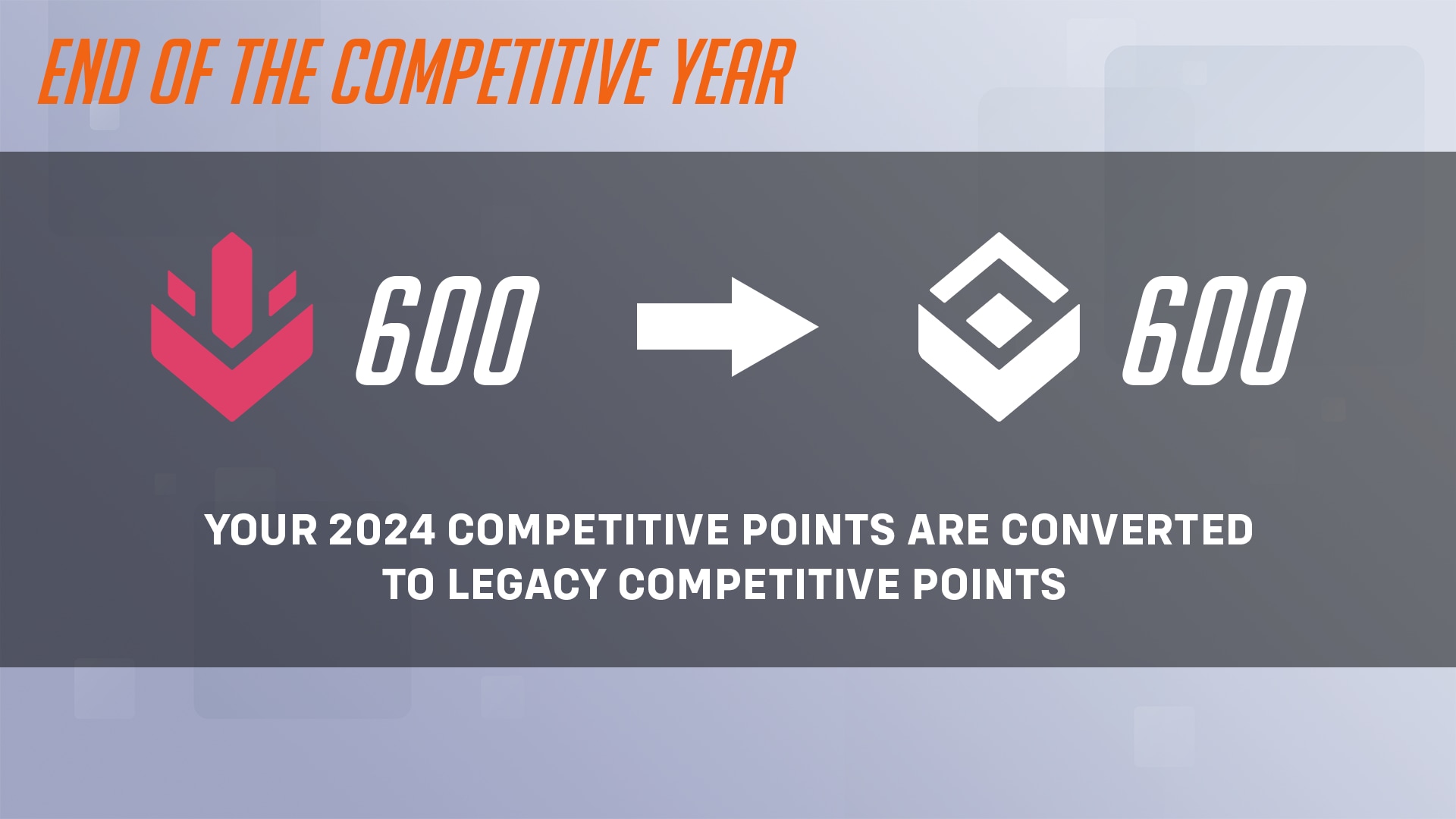
Last Chance to Claim End-of-Season Bonuses
Starting in Season 9, Competitive Challenges that grant bonus Competitive Points are also changing. Season 8 will be the last season to claim end-of-season Competitive Challenges for Seasons 1-7
Log in before the end of Season 8 to grab any rewards from Season 7 or earlier that you haven’t claimed yet. Once Season 9 begins, you will be unable to receive past Competitive Points from completed Competitive Challenges from Season 7 or earlier. You’ll still be able to claim your Season 8 rewards during Season 9, but you must log in to receive that bonus before the end of Season 9.
Introducing Changes to Core Gameplay
Beyond the Competitive Rework, Season 9 features major changes to the fundamentals of Overwatch 2 gameplay that affect every hero. We’ve heard the community feedback around some gameplay pain points, and developed changes to the core gameplay with these goals in mind:
- Deliver a more consistent feel to firing and landing your shots on your opponents.
- Lessen the impacts of burst damage to allow for greater counterplay.
- Adjust where in-game healing and damage are effective to reduce stagnant team fights.
All of these changes have been designed to work in combination to balance each other out, and we’re excited for you to get in the game and experience them all at once.
Making Your Shots Feel Good to Hit
One of our main goals with these adjustments is to make firing your weapons and abilities feel more consistent without impacting the time to eliminate a target and without removing the overall feel of gameplay we all know and love. When examining how burst damage values have changed over time, we found that in most cases, they've gone down in raw value, though that may not necessarily mean they became weaker relative to other changes. The 5v5 environment and new heroes of Overwatch 2 certainly factor into the perspective, but it's often overlooked that the player base's average skill level, game knowledge, and pace of gameplay are relatively higher now than when the game first launched.
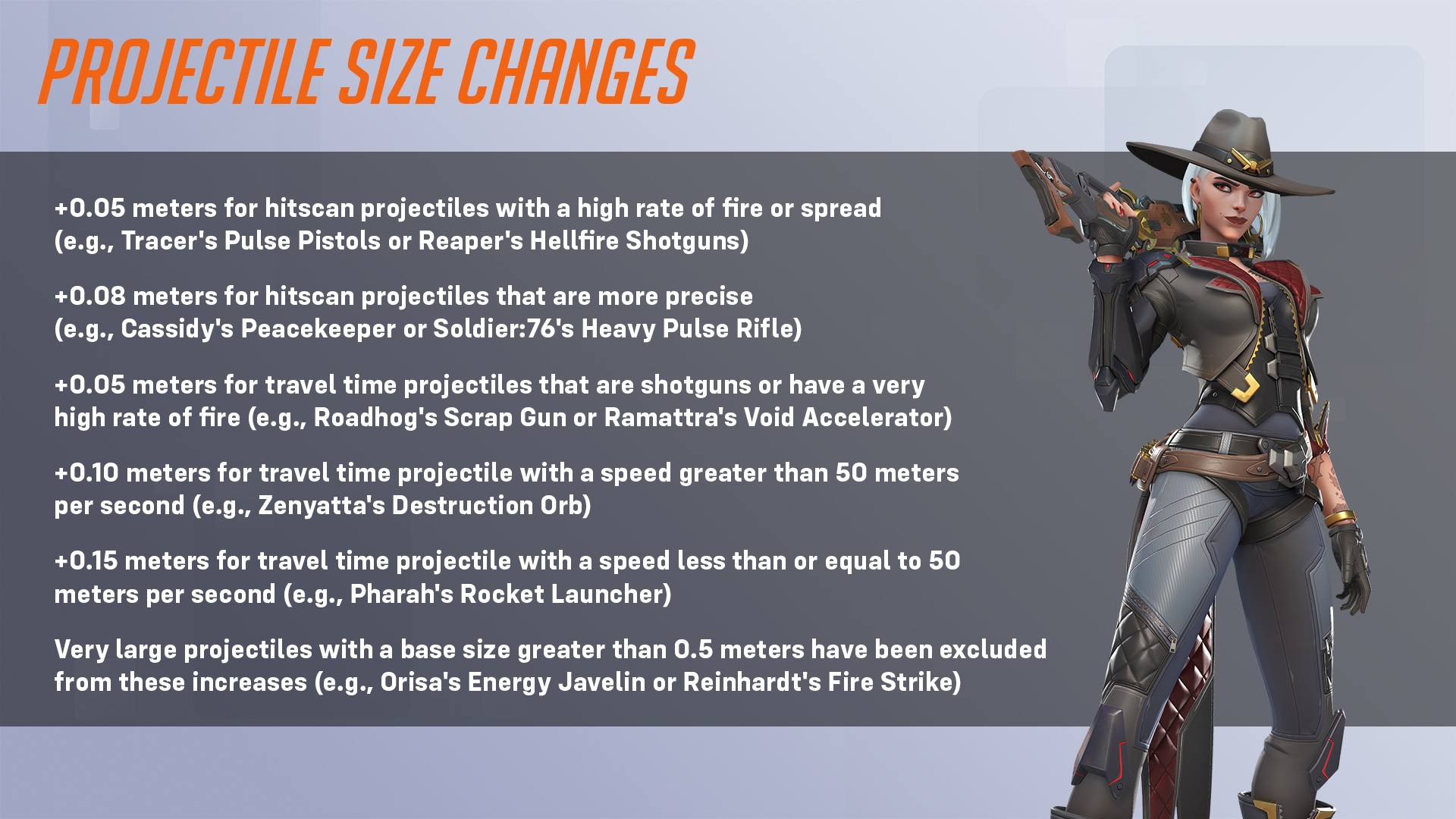
When it comes to aiming as a mechanical skill requirement, even players with excellent aim often mention how it can feel random whether a shot hits or not. Due largely in part to the whip speed movement acceleration heroes have when changing directions, combined with all of the dashing/leaping/teleporting abilities, hitting your target can be very difficult. Crisp, responsive movement is important to the core gameplay feel, so we wouldn’t want to just slow down player movement. Instead, we’re improving hit consistency by making both damage-dealing hitscan and travel time projectiles larger. Heroes that have weapons or abilities that don't benefit from any projectile size changes will receive additional balance changes. However, we don’t want to make too many hero adjustments before getting a better understanding of the effects from these initial changes, so tune in for more on individual heroes in future updates.
Adjusting Health Pools to Balance Gameplay
Since we're increasing the average accuracy of nearly all heroes and want to keep time-to-kill similar, we're also increasing everyone's maximum health. We’ve already balanced damage values, damage boosts, critical damage breakpoints, and other factors around 200-250 HP heroes, so the new health ends up requiring at least one more hit from most heroes to eliminate an enemy.
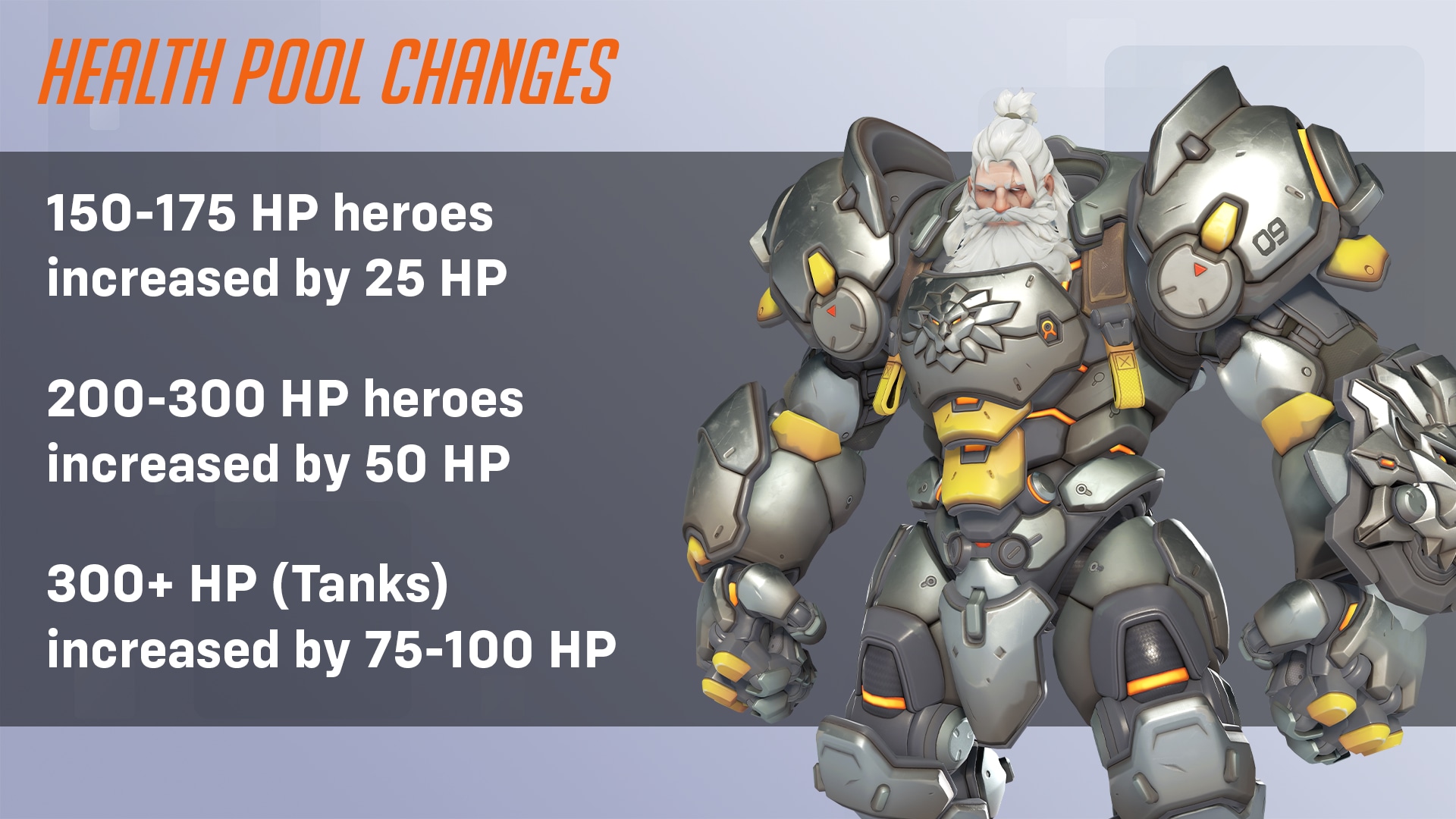
Giving More Self-Reliance in Team Fights
We also want to make sure that the flow of the team fight doesn’t take away from individual player decisions that can determine the outcome of a match. Tanks already have a significant role in each team fight as they often are the ones to take space and determine where each fight takes place. Whereas we want to enable more critical decision-making among the Damage and Support roles.
The changes to projectile size and health pools effectively reduce the impact of burst damage and tones down the relative strength of healing, meaning it will take longer to heal someone from 1 HP to full health. To ease the friction of an increased time to fully heal allies out of combat and enable Support players to make more informed decisions on who to heal, everyone can now regenerate health passively at a rate of 20 healing per second after 5 seconds of not taking damage, and the Support role passive heal has been adjusted to 2.5 seconds.
An increase to health pools and weakening of burst damage means that heroes live longer and team fights will take longer to conclude. To combat some of the potentially extreme situations there, we’re also introducing a new Damage passive empowering them to more easily fulfill their role in securing eliminations, reduce in-combat healing, and potentially add an additional strategic layer to focus firing targets.
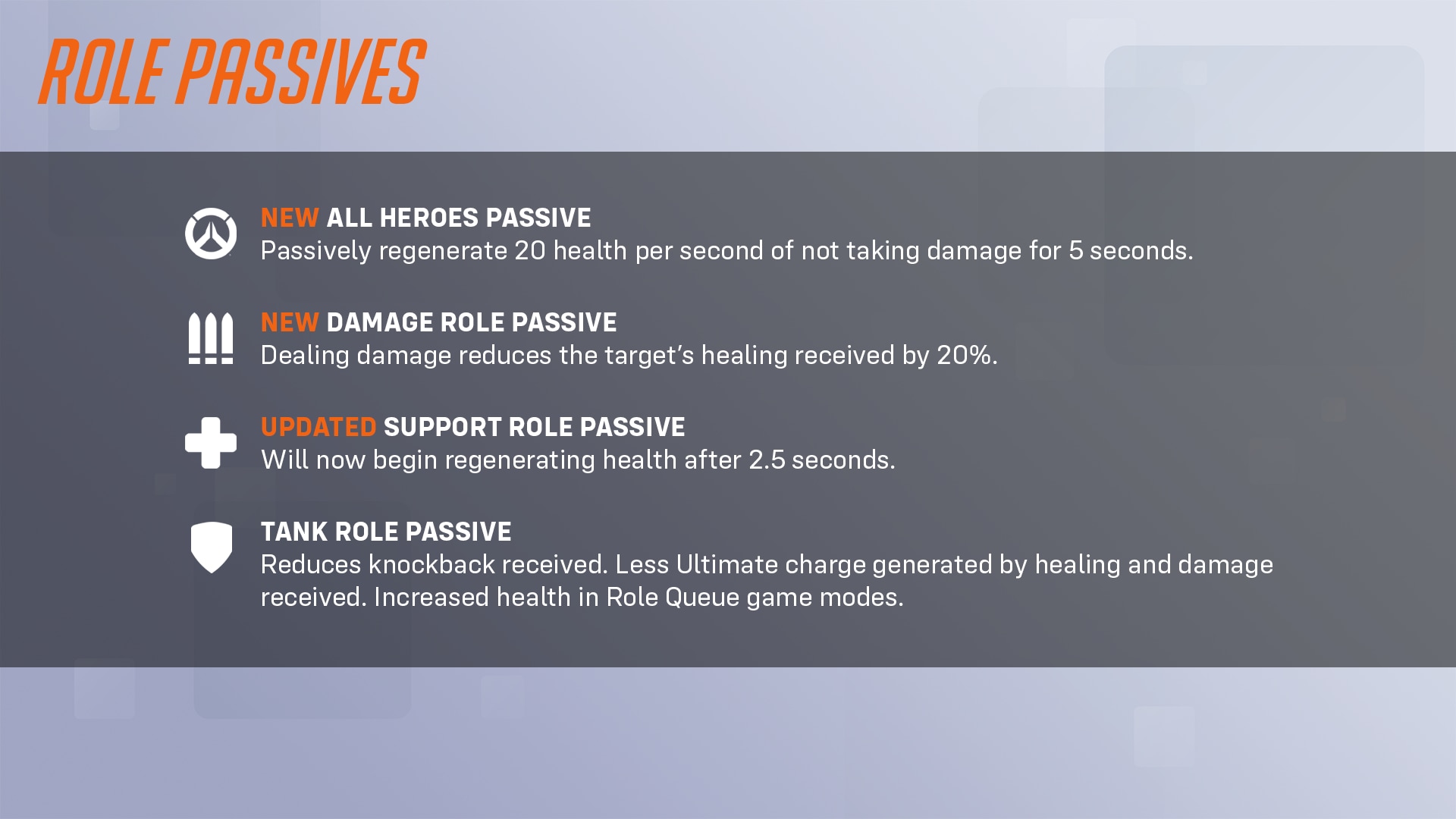
At its core, Overwatch 2 is a competitive game, so it’s important for the core systems and Competitive System to be as intuitive and accessible as possible. In addition to these core system changes, we’re introducing reworks to Pharah and Junkertown, which we’ll go into in a later blog. For now, let us know what you think when Overwatch 2 – Season 9: Champions launches on February 13!